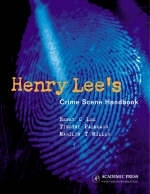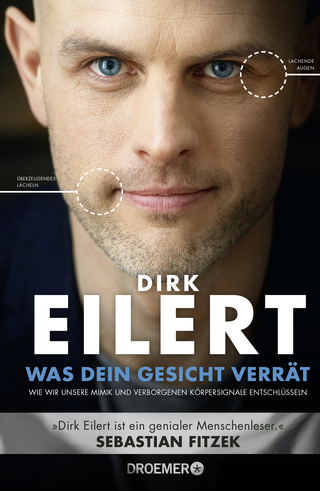
Henry Lee's Crime Scene Handbook
Academic Press Inc (Verlag)
978-0-12-440830-2 (ISBN)
- Titel erscheint in neuer Auflage
- Artikel merken
Henry Lee's Crime Scene Handbook outlines proven methods to help you collect and process physical evidence correctly, analyze it thoroughly, and understand its relevance to the case involved. It evaluates the newest chemical and instrumental techniques, and covers new areas such as forensic analysis of computers and advanced shooting scene reconstruction methods. This "must-have" guide is enhanced with dozens of color photographs, logic trees, check lists, worksheets, case studies, lists of suppliers, and more. Henry Lee has consulted on thousands of criminal cases around the world and is highly sought after to help solve difficult cases. Now he and his co-authors share more than 50 years of combined experience in this systematic approach to crime scene processing. It provides the information you need for initial training, to take with you in the field, and to refer to again and again during the course of each investigation. KEY FEATURES:* Presents a unique, systematic approach to crime scene processing * Covers in detail how to manage a crime scene, collect information, search for, collect, and preserve physical evidence, conduct field tests, and reconstruct a sequence of events * Describes how to use the latest chemical and instrumental techniques for each kind of crime scene * Outlines common problems and provides clear recommendations for overcoming them * Includes logic trees, checklists, and worksheets that help investigators evaluate the evidence in specific types of crimes
Dr. Henry C. Lee was born in China in 1938. He graduated in 1960 from the central Police College in Taiwan, Republic of China, with a major in police science. After working in Taiwan for several years as a police captain, he came to the United States to pursue further study. In 1972, he earned his BSc degree in forensic science from John Jay College of Criminal Justice in New York. He went on to study science and biochemistry at New York University and earned his MSc degree in 1974 and PhD in biochemistry in 1975. He holds an honorary doctoral degree conferred at the University of New Haven, Connecticut, as well as both an honorary doctoral degree and a Doctor of Human Letters degree from St. Joseph College, at West Hartford, Connecticut, and Bridgeport University, Connecticut. He also holds honorary Doctor of Law degrees from Williams College of Law, Rhode Island, and Doctor of Science from the University of New Hampshire and American International College in Springfield, Massachusetts. Dr. Lee joined the University of New Haven in 1975 as an Assistant Professor where he created the school’s forensic science department. He was granted tenure as a full professor three years later. Concurrently, Dr. Lee is the Chief Criminalist and Director of the Connecticut State Police Forensic Science Laboratory in Meriden, Connecticut. He is also a professor of the Forensic Science program at the University of New Haven and an adjunct professor at eight other universities. Dr. Lee is the recipient of many awards including the Distinguished Service Award from Taipei Taiwan Police Headquarters in 1962; the American Academy of Forensic Sciences Criminalist Sections Distinguished Criminalists Award in 1986; and the J. Donero Award from the International Association of Identification in 1989. He has received several hundred other commendations and awards. In 1992 he was elected a Distinguished Fellow of the American Academy of Forensic Sciences. Timothy M. Palmbach is a graduate of the University of Connecticut School of Law. He graduated from the University of New Haven with an MSc in forensic science – criminalistics concentration. He was awarded a Graduate Fellowship Award for his academic excellence. In addition, he earned bachelor degrees in chemistry and forensic science from the University of New Haven, Connecticut. In 1982, Mr. Palmbach became a member of the Connecticut State police. Currently, he holds the rank of Major and serves as Commanding Officer for the Division of Scientific Services which consists of the Forensic Science Laboratory, Controlled Substance and Toxicology Laboratory, and the Computer Crime and Electronic Evidence Laboratory. Previous assignments within the State Police include Chief of Staff for the Department of Public Safety, Assistant Director, Forensic Science Laboratory and Supervisor for the Major Crime Unit. During these assignments he testified on numerous occasions in both Connecticut State and Federal courts, including providing expert witness testimony in the areas of crime scene processing and reconstruction and blood spatter pattern interpretation. He has worked on several high profile criminal investigations and assisted Dr. Henry Lee with crime scene reconstruction of several other high profile investigations. Currently, he serves as a member of two forensic investigative committees, chaired by Dr. Henry Lee and comprised of numerous renowned international experts from various forensic science disciplines. One of these committees is dedicated to finding and identifying the remains of Princess Pocahontas and returning them to the United States. Mr. Palmbach is a Practitioner in Residence and Distinguished Lecturer at the University of New Haven, Department of Forensic Sciences. He is an adjunct professor at Central Connecticut State University, and has lectured at several other universities. Marilyn Miller is a graduate of Florida Southern College with a bachelor’s degree in chemistry. She earned a master’s degree in forensic chemistry from the University of Pittsburgh and a Doctorate in Education from Johnson & Wales University in post-secondary educational leadership. Miller is a tenured, associate professor in the Department of Forensic Science at Virginia Commonwealth University. As a post-secondary educator for almost twenty years, she teaches a wide variety of forensic science and crime scene investigation classes to both forensic science and criminal justice majors at the undergraduate and graduate levels. She is a Fellow in the Criminalistics section of the American Academy of Forensic Science, the Southern Association of Forensic Scientists and the American Chemical Society. Miller is a former faculty member at the University of New Haven and the Henry Lee Institute of Forensic Science/ National Crime Scene Training Center. She has presented and taught as part of hundreds of forensic seminars across the United States and foreign countries. She is the author or co-author for several textbooks or chapters concerning crime scene investigation or reconstruction and forensic science. Before coming to VCU, she worked as a supervisor and forensic scientist for law enforcement agencies in North Carolina, Pennsylvania and Florida. She has testified over 400 times in county, state and federal courts of law as an expert witness in the field of forensic sciences and crime scene reconstruction. She has participated in hundreds of crime scene investigations, both as an active investigator. Currently, she also serves as a consultant for both prosecutors and defense attorneys. Miller designed, opened and operated crime scene units and forensic laboratories on the West Coast of Florida for over ten years.
General Crime Scene Considerations
Elements of Crime Scene Management
General Crime Scene Procedures
Crime Scene Documentation
Searching for Physical Evidence
Collection and Preservation of Physical Evidence
Logic Trees
Field Tests and Enhancement Reagents
Special Scene Techniques
Crime Scene Reconstruction
Appendix I: Crime Scene Investigation Equipment Inventory
Appendix II: Game Plan for Processing
Appendix III: Resources and Supplies
Appendix IV: Bibliography
Case Study 1: Partial Reconstruction
Case Study 2: Complete Reconstruction
Case Study 3: Limited Reconstruction
Index
| Erscheint lt. Verlag | 26.6.2001 |
|---|---|
| Verlagsort | San Diego |
| Sprache | englisch |
| Maße | 189 x 246 mm |
| Gewicht | 1380 g |
| Themenwelt | Recht / Steuern ► Strafrecht ► Kriminologie |
| ISBN-10 | 0-12-440830-3 / 0124408303 |
| ISBN-13 | 978-0-12-440830-2 / 9780124408302 |
| Zustand | Neuware |
| Haben Sie eine Frage zum Produkt? |
aus dem Bereich



